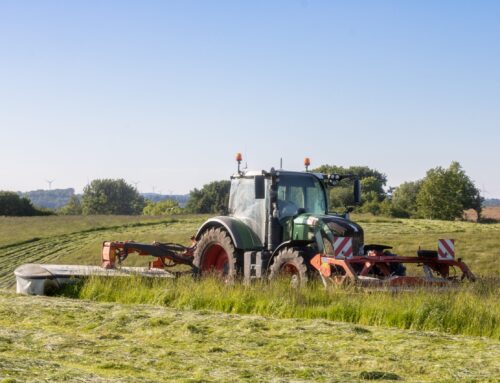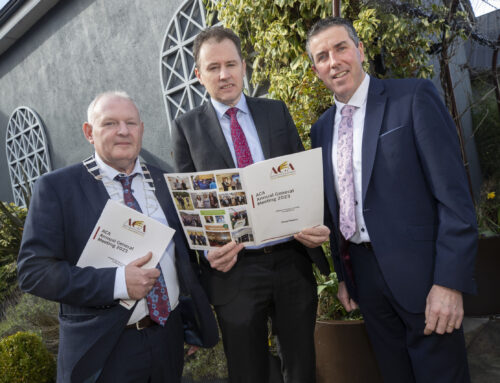Over the last week Macra na Feirme, Ireland’s voluntary group representing about 10,000 young people from rural Ireland have called for more government funding to support the land mobility service. It’s a timely request, as land and leasing prices continue to swell for young farmers looking to expand or develop their own career in farming.
Macra na Feirme President, John Keane is asking that the Land Mobility Service be funded by the National Exchequer as Ireland’s finalised CAP Strategic Plan 2023-2027 will not be supporting it. The service is well renowned as the European Commission highlighted the success of Land Mobility and outlined how it can be a model adopted by other member states. It now rests with the Department of Agriculture, Food and the Marine to see just how essential the service is over the next few weeks.
What is the Land Mobility Service?
The Land Mobility Service was established in 2014 as there was and still is an urgent need to address farm successor issues. The support service is for farmers and farm families who are thinking about expansion, changing enterprise or even stepping back. More importantly the service can identify opportunities for young farmers wishing to expand or wanting to develop their own career in farming. The service provides a solution to an ageing farming population and a younger demographic that want to enter the industry.
This service is invaluable in an Irish context as unfortunately, agriculture typically has an ageing workforce. In 2016, around a quarter of farm holders in Ireland were aged 65 years and over with just 5% of people aged less than 35 years according to CSO figures.
Addressing the Joint Oireachtas Committee on Agriculture, Food and the Marine in June 2021, John Keane, Macra na Feirme President stated that: “The main barriers to young farmers to entering farming include access to land and access to capital.” This statement is now more relevant than ever as recent reports show that land lease prices have exceeded €500/acre.
This figure is further compounded by the Society of Chartered Surveyors Ireland / Teagasc Agricultural Land Market Review and Outlook Report 2022 released in April of this year. The report forecasted that national farmland prices are forecasted to rise by 6% on average in 2022. The price of good land showed the biggest increase in 2021 – up by an average of 17% nationally from €9,381 to €10,962 per acre according to the report. The 2023 report might provide tough reading.
All these land price rises, combined by record levels of inflation, more expensive fuel costs and a boom in both fertiliser and feed prices demonstrate that being a young farmer attempting to enter the industry is arduous to say the least. How the DAFM responds to these challenges and support the service will reveal how the department supports the younger farming generation.
Speaking at the end of 2021, Minister for Agriculture, Food and Marine Charlie McConalogue announced a 100% increase in his department’s funding for the Land Mobility Service for 2022. This increased from a €50,000 annual funding figure to a €100,000 figure for 2022. It seems the service will need more to grow, so what do Macra na Feirme want exactly?
Speaking to Agri Insider, Macra President, John Keane said: We’ve looked at the costings that we did for the CAP strategic plan submission and that was in the region of €1.3 million. We resubmitted a plan to the Department of Agriculture in the order of that for funding on the back of our national conference this year, on October 29, that the Minister would secure something for us.”
As this funding is not being delivered through CAP, it is hoped that national exchequer funding will support the service. John Keane said: “What’s currently gone in is that we would grow up to an annual allocation of €1.3 million over the next seven years so that we would start off roughly in the region of €400,000 and as the Land Service grew and it got a national coverage, you would need obviously more funding.”
What else are Macra proposing?
Another universal issue for Irish farmers is that costs on all Irish farms are spiralling at the moment and young farmers are in a precarious position when it comes to financing capital and accessing land. Keane outlined some proposals that Macra have to combat these issues for entrant farmers.
“We have two other proposals submitted to the department. One of them is around land succession and that essentially compliments the mobility service whereby an older farmer stepping back has an income from the farm and the young person stepping forward is able to create an income and they obviously have the suite of investment supports that are there.
“We’ve also a request gone in for the introduction of financial instruments for young farmers and new entrants that give them priority access to SBCI (Strategic Banking Corporation of Ireland – which gives lower-cost loan scheme for SMEs and small mid-caps involved in agriculture or fishing) funding at the lower rate.
“From where we’re standing if you have the land mobility service fully funded, if you had an on-farm succession scheme that supports the older farmer to step back and the investment support ceilings that we’ve asked for the young farmer to invest in the farm. We also have this financial instrument package there that gives them access to lower interest, you would have a lot of work done to help young farmers and entrants.”
It is these proposals and more that are needed to sustain the next generation of farmers in this country as costs continue to rise.





